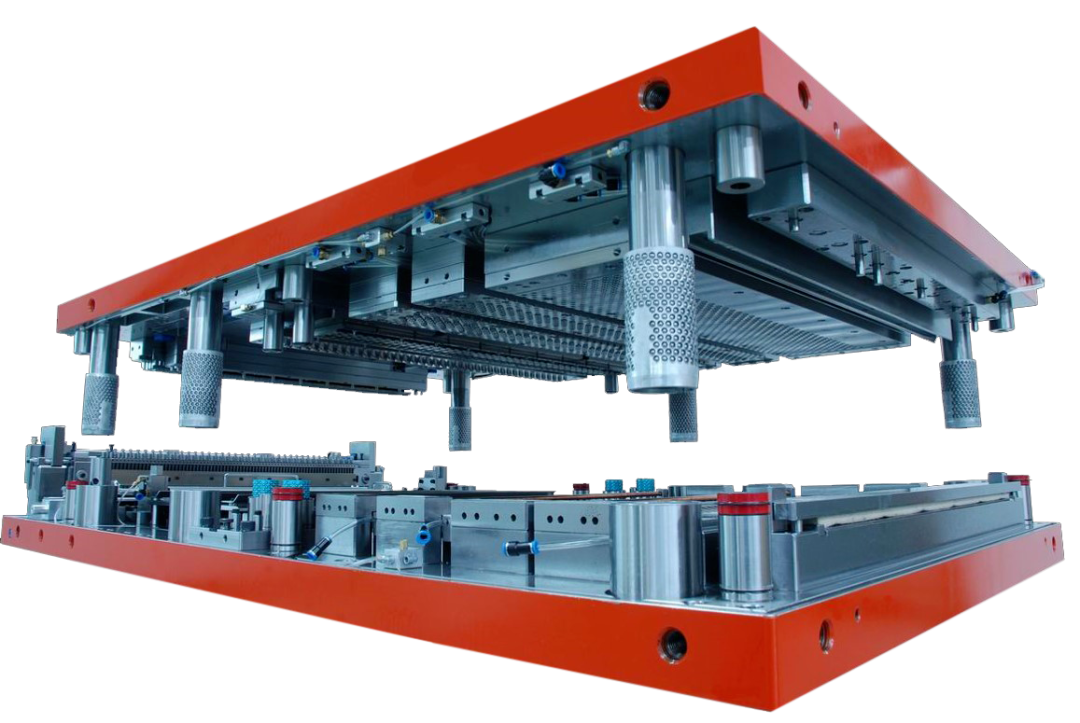Keyword: CNC machining parts Auto Spare Parts Milling machining Turning parts Grinding machining
Contact person: Nick Lee
Phone: (86) 15362887736
E-mail: sales03@dgmtwj.cn
Tel: (86) 769-88388276
Factory: No.2, Baidai Industrial Park, Daojiao Town, Dongguan, China ,
Going to a mobile phone stamping mold factory to learn precision mold technology, what makes me feel the most is not its superb mold design level and precision processing technology, but its precision mold development concept.
On the second day, the team leader told us that he would instill a precise mold concept. What is the concept of precision molds? I am a little disapproved. The products made here are all thin products. I have made some before. How come there is no precise concept?
With the deepening of the study, I began to realize my superficiality!
The first stop of our study trip was the high-speed modular building. As far as the precision of the mold is concerned, the high-speed terminal mold should be regarded as the most precise here. The stamping materials are generally 0.08-0.2mm stainless steel and aluminum. The punching gap is as small as 0.008mm, and the minimum width of the punching hole is 0.25mm. The punch looks like a weak wind. How to punch such a small hole? How can such a small blanking gap ensure the manufacturing accuracy of the mold? It would be hard to imagine if it weren't for seeing it.
Turning over the picture, understanding the mold structure, design and manufacturing tolerances and its special manufacturing process, it is not difficult for us to feel the pulse of this set of molds.

All punching parts are made of block and punch from top to bottom, and the knife edge is made of tungsten steel. The entry holes and fixed pin holes of the upper template, stripper plate and lower template are JG ground, sliding fit clearance c+0.005-0.010mm, non-slip fit c+0.003mm, machining accuracy +/-0.002mm; main structure guide In order to match the ball sleeve with the precision guide post, the small hole punching structure adopts a local structure separated from the upper die, and is locked on the lower template with a contour sleeve to compensate for the accuracy error of the stamping equipment; the guide part of the local structure is a precision graphite self-lubricating internal guide The inner guide bush of the column, stripper plate and lower template is filled with glue to make up for the processing error of the guide component and improve the guiding accuracy to ensure the position accuracy of the template during the stamping process; the smallest possible stamping stroke can make the punching punch The length is as short as possible, and proper punch reinforcement can improve the strength of the punch. This can fully reflect the design concept of mold designers who tend to be high-precision, and ensure the high quality and high requirements of the mold as much as possible.
Modern processing equipment and high-precision processing technology make these design concepts more effective. After the heat treatment of the template, it undergoes cryogenic aging treatment to eliminate internal stress, prevent template deformation, and ensure the processing stability of the template. Plane grinding ensures the flatness of the template, the parallelism is 0.005mm, the precision of EDM is controlled within ±0.002mm, and the wire is processed slowly. The accuracy is controlled within ±0.0015mm.
For high-precision machining, the temperature problem must not be ignored, because the temperature difference is the enemy of accuracy. Because of the thermal expansion and contraction of the material, the linear expansion of the steel is 12μm per meter of length when the temperature changes by 1°C. This is the fact that every machine in every corner of the world is unchanged. If we don't care about the important issue of temperature, how do we discuss accuracy? The control of workshop temperature is very important because the accuracy of the processed workpiece has a lot to do with it. The temperature of precision machining is generally controlled at a constant 20°C, and the temperature fluctuation is required to be less than 0.5°C/hour, and the air-conditioning system maintains a constant temperature difference of ±1°C throughout the day.
I admire the meticulousness of the mold assembly engineer even more. First, understand the mold drawing carefully, be familiar with the product information, analyze the mold structure, understand the design intent; check parts, chamfering, polishing, and engraving to make the mark meticulously; template deburring, oiling and rust prevention step by step, installing outer guide posts and guide sleeves Use a special positioning tool to ensure its verticality; the actual thickness of the template is measured, and the four-point measurement difference is within 0.005mm as qualified; the punch and the block should be matched with each other, and the matching should be smooth, the grinding degree should be smooth, and the judgment standard should be clear; The self-inspection of the product when adjusting the mold should use a projector, and the accuracy is 0.003mm when the mold is inserted into the block; without the concept of precision, it is impossible to develop high-quality, and it is impossible to install high-precision molds.
Mold development is mainly divided into three stages: mold design; mold processing; mold assembly, mold trial and repair. The three are indispensable. A set of high-precision molds must have precise design, precise processing, and precise assembly.
The designer gives the mold the soul, the processor casts the mold body, and the assembler makes the mold alive. The concept of precision mold runs through the entire process of mold manufacturing. The concept is inherited from top to bottom, and from master to apprentice. Good habits have become natural, and it is not difficult to imagine the birth process of each of the molds. Cultivating the concept of precision molds should be the focus of my study this time, learning the good habits of others, forming my own good habits, establishing concepts, and integrating into the work.